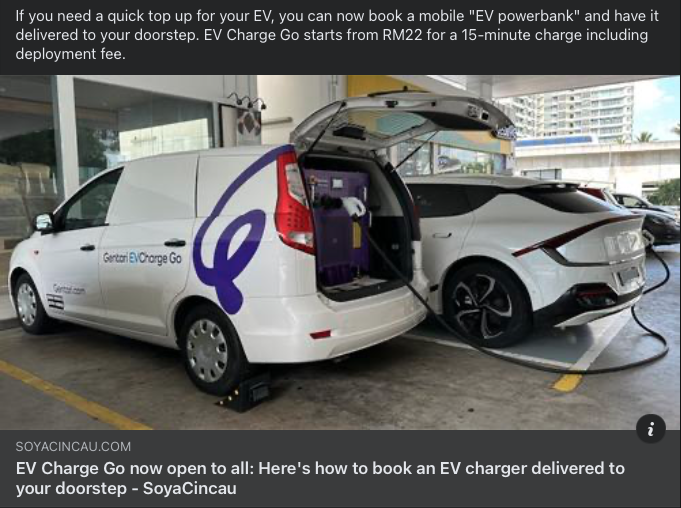
The introduction of a mobile “EV powerbank” service, such as the EV Charge Go, represents a significant advancement in the realm of electric vehicles (EVs) and their accessibility. This innovative solution seems to address one of the key concerns surrounding EV adoption – the availability of charging infrastructure and the need for fast and convenient charging options.
The idea of being able to book a mobile EV powerbank and have it delivered to your doorstep is incredibly convenient. It effectively eliminates the worry of finding a nearby charging station or having to wait in line for an available charging point, which is often a concern for EV owners, especially in areas with limited charging infrastructure. This service could potentially transform the way people perceive and use electric vehicles, making them a more viable and practical option for daily commuting and long-distance travel alike.
The pricing structure, starting from RM22 for a 15-minute charge, including the deployment fee, appears to be reasonably competitive. However, it would be important to compare it with the cost of charging at traditional fixed charging stations to understand the value proposition better. The convenience and time-saving aspect of this service could justify the slightly higher cost for some users, but it would also be essential to ensure that the pricing remains competitive in the evolving EV market.
While the concept of a mobile EV powerbank is promising, there are several aspects to consider for its widespread implementation. Firstly, the range and capacity of these power banks need to be sufficient to cater to various EV models and battery sizes. It would be crucial to have a standardized and adaptable power bank that can serve a wide range of vehicles to ensure widespread adoption and avoid compatibility issues.
Moreover, the environmental impact of such a service should also be taken into account. The power banks themselves need to be charged, and the energy source for that charging could influence the overall sustainability of the service. Ideally, the power bank charging should be powered by renewable energy sources to align with the goal of reducing carbon emissions and promoting eco-friendly mobility.
Additionally, the scalability and availability of the mobile EV powerbank service need to be carefully planned. As the number of EV users grows, there will be a higher demand for such services, and it will be essential to have a robust logistical system in place to ensure timely deliveries and adequate coverage in various regions.
In conclusion, the introduction of a mobile “EV powerbank” service like EV Charge Go is an exciting development that has the potential to significantly enhance the convenience and accessibility of EV charging. The concept addresses one of the main barriers to EV adoption and offers a promising solution for urban dwellers, long-distance travelers, and areas with limited charging infrastructure. However, careful consideration must be given to factors like pricing, compatibility, sustainability, and scalability to ensure its long-term success and positive impact on the EV industry and the environment.

